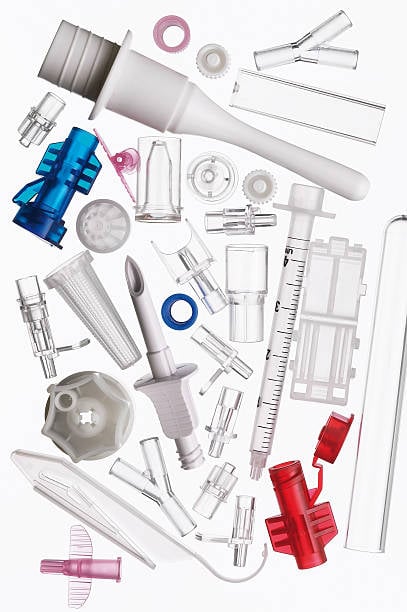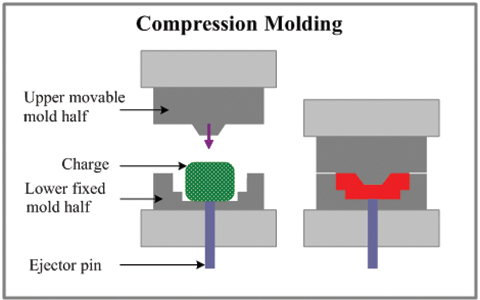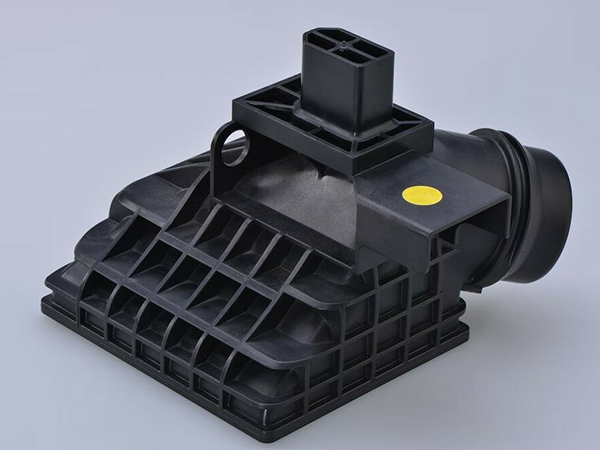Choosing a medical micro injection molding machine is not just another technical decision but a strategic choice for accuracy and sustainability for the long term. Within the medical manufacturing space, the precision of components within the microns and cleanliness are uncompromisingly important. Therefore, the micromolding machine should not only be functional, but also consistently ensure injection control, accept difficult materials, and work within cleanroom expectations. Given the volume of micro injection machine suppliers in the market today, what actually matters must be understood, from control systems to traceability, etc. The right small injection molding machine is not only important as a piece of manufacturing equipment, but is likely to become a crucial part of any successful medical manufacturing business for producing consistently compliant, stable and efficient production.
Source: iStock
Why Is It Necessary to Select the Right Machine for Medical Micro Injection
Medical products do not allow mistakes, especially when measured in milligrams or microns. As a result, selecting the appropriate micro injection molding machine is vital for the production of medical devices. In the medical arena, even slight differences can result in changes to product capability, put patients at risk, and may not pass regulatory inspection. Selecting the wrong small injection molding machine can result in material losses, inconsistent quality, and needless downtime.
Medical-grade production requires equipment that can provide precision repeatability, a proven clean process, with process control. While precision is paramount, the right micro injection machine will ensure that it is also optimized for cleanroom settings and/or can trace production workflows through a computerized system, and regulatory approval. Furthermore, working with qualified micro injection molding machine manufacturers that specialize in the medical device industry will not only offer manufacturers experience and credibility but also validation support and reliable after-sales service.
Ultimately, the machine selection impacts all stages of production, from design to delivery. With the right micro molding machine, you can produce to medical standards, reduce your risk, while remaining competitive in difficult markets.
Considerations to Choose a Medical Micro Molding Machine
Injection volume and accuracy
Consider:
- What are the minimum/ maximum weight characteristics of the part?
- What is the weight repeatability requirement? (Usually: Cpk ≥ 1.67; Coefficient of variation (CV) ≤ 0.5% – or tighter)
- What is the actual minimum injection volume needed? (Note: the nominal minimum injection volume of the machine is the lowest volume that will achieve consistent accuracy, not the theoretical minimum).
Principle:
- Micro-control: The number one issue in micro-injection molding is metering and injecting extremely small melt volumes. Meters must have screws or plungers of < 14mm diameter, and have a servo-driven unit to ensure precise stroking.
- Plasticizing consistency: Screws with small diameters must be designed to plasticize the material consistently in order to flow a uniform, high-quality melt, especially amongst the high viscosity or shear-sensitive materials used in medical applications.
- Leakage: In small volumes; even small leakage in a check valve will represent huge meter inaccuracy. Check valves on the micro molding machine are precision-engineered for false leakage.
Slight injection volume variations can potentially cause a medical component to malfunction or shift beyond validation parameters. Hence, one should work with micro injection molding machine manufacturers that own special technologies to encase molding requirements that emphasize medical accuracy from concept scale production stages.
Plasticizing Capability and Material-Adaptability
Consider:
- What kind of medical plastics are intended to be used? (E.g., PC, PP, PE, PEEK, PEI, PSU, COC, compostable, LSR, etc.)
- Are there any specific material requirements? (Should be addressed specifically regarding temperature, viscosity, shear sensitivity, heat sensitivity, corrosiveness, drying, etc.)
Principle:
- Screw design: The Screw must fit the rheology of the material.
For example:
- PEEK requires a screw that is high-temperature resistant and has a large compression ratio.
- LSR requires a highly specialized reciprocating screw or plunger system that minimizes shear.
- Barrel temperature control: A precise barrel heating system is necessary. A good micromolding machine uses PID or advanced control algorithms to maintain tight accuracy (i.e., say ±0.5°C, or better). This is vitally important with high temperatures or sensitive materials like PEEK (>350°C).
- Material handling: Hygroscopic materials like PC, PA, PEEK should have integrated (or compatible) drying hoppers in order to avoid moisture issues.
An adequately equipped small injection molding machine that has good material adaptability provides process stability and minimizes downtimes due to material related deficiencies. This is particularly crucial in environments with regulations where traceability, repeatability, and purity are essential. Engaging expert manufacturers of micro injection molding machines can ensure your equipment supports and complies with the materials specific to your process.
Cleanroom Compatibility and Contamination Control
Consider:
- What cleanroom classification do you need for your production? (i.e., ISO Class 7, ISO Class 8, or more stringent)
- What steps do you need to take to help reduce contamination from particles, volatiles, and microbes?
Principle:
- Airtightness: The hopper, barrel, and injection unit should be sealed to keep airborne contaminants out of the process while keeping material dust from escaping into the environment.
- Surface treatment: All surfaces that are exposed to materials or air should be made of stainless steel (i.e., 304 or 316L), easily cleaned, and free from crevices and sharp corners. Hard chrome plating and specialized coatings can offer resistance to wear and prevent sticking.
- Lubrication: Machines must use FDA-approved, low-volatile, dust-free lubricants in a sealed system. This movement of sealed parts prevents oil from leaking into cleanroom air or product zones.
- Positive pressure design: Essential machine zones such as the control cabinet must be positively pressurized to keep away airborne cleanroom contaminants during production operation.
- Exhaust: Machines processing materials at high temperatures must feature adequately performing exhausts, ideally with HEPA filtration, to safely remove hazardous chemicals from thermal decomposition.
- Design for easy cleaning: Smooth, curved surfaces and an overall design that avoids sharp corners or grooves help simplify cleaning and reduce microbial loading.
Cleanroom compatibility is not an option in medical production; it is essential. This is why the leading micro injection molding machine manufacturers pay careful attention to hygienic design, compliant materials, and contamination prevention for each component of the micromolding machine. When you have a machine that prioritizes cleanroom integrity, you are safeguarding your product and your compliance status.
Machine Control and Process Monitoring/Traceability
Consider:
- What level of accuracy and stability is required for process parameters such as pressure, speed, position, temperature, and time?
- What key process parameters are required for real-time monitoring and data logging?
- How will the machine be compliant with regulations such as 21 CFR Part 11 (Electronic Records and Signatures)?
Principles:
- High precision closed-loop control: Full-servo drive systems (injection, plasticizing, mold closing, ejection) are necessary to ensure precise, repeatable actions. Feedback from pressure and position sensors provides stability throughout.
- Data acquisition system: The micro injection machine should log high-frequency and accurate data of injection pressure curves, holding pressure, mold and material temperature, and cycle time.
- Traceability: The system should accommodate batch management and associate production data, such as timestamps, operator ID, material batch number, and process parameters, with individual product serial or batch numbers.
- User rights management and audit trail: The control software should have secure login levels, role-based access for users, and a clear audit trail of critical actions and parameters associated with actions consistent with GMP and FDA regulations.
- SPC functionality: Built-in Statistical Process Control (SPC) functions allow real-time tracking of critical quality parameters, including part weight, to keep processes consistent.
- User-friendly interface: By providing a properly designed human-machine interface (HMI), the setup, monitoring, and troubleshooting processes are made simple, allowing the micromolding machine to become easier and faster to operate.
With micro injection molding machine manufacturers, it is not only the hardware they provide, but they also provide you with a complete control and monitoring interface to keep your production efficient, traceable, and fully compliant within the medical world.
Mold Compatibility and Clamping Force
Consider:
- What are the mold’s dimensions (length × width × height) and weight?
- How much clamping force is required? (Depending upon the projected area of the product and cavity pressure, low clamping force is normally required for micro molding, typically a few to tens of tons.)
- What are the mold interface requirements? (e.g., hot runner control, mold temperature controller, core pulling, pneumatic or hydraulic ejection)
- Does the mold need to be very precise while clamping with minimal deformation?
Principle:
- Template size, spacing, and stroke: The micro molding machine must accommodate the dimensions of the mold and provide enough mold-opening stroke for smooth ejection of the part.
- Clamping accuracy and parallelism: Regardless of whether elbow or direct-pressure is used, the machine must preserve the parallelism of the mold and evenly apply clamping pressure on the mold, both critical for replicating microstructures accurately.
- Low-pressure mold protection: Having a sensitive mold protection system in place will detect obstructions during closing and actuate if necessary to limit damage to precision molds.
- Ejector force and stroke: The ejector must provide sufficient force and control to safely remove small and fragile parts without damaging the part or the mold.
Mold-machine integration in medical production is critical. Appropriately small injection molding machines ensure low deformation, predictable cycles for machine operations, and extend the life of the molds. The best micro injection molding machine manufacturers understand these factors and build machines to protect the molds and your processes.
Energy Efficiency
Consider:
- What are your costs?
- What are the environmental and energy efficiency standards you need to comply with for your facility?
Principle:
- All-electric drive: All-electric small injection molding machines are the standard in micro molding due to their increased energy efficiency, control, response time, lower noise, and no hydraulic oil. With all electric, power is consumed only when engaged in motion, resulting in much less energy consumption.
- Servo pump hydraulic drive (if applicable): If a hydraulic system is chosen, a servo-driven variable pump must be used. This type of design gives hydraulic oil only when needed, hence avoiding wasted energy from traditional fixed pump systems.
Choosing an energy-efficient micro injection machine isn’t just about saving on the electricity bill, but also provides a cleaner production environment and a more stable control of temperature changes. Top micro injection molding machine companies are now matching the highest levels of precision with sustainability for medical manufacturers, gaining the advantage for both compliance and cost control.
Verification and Service Support
Consider:
- Does the machine offer complete IQ, OQ, and PQ documentation for validation?
- Is technical support available locally or remotely?
- Are remote diagnostics and system updates available?
Principle:
- Regulatory requirements: A suitable micro injection molding machine must offer IQ, OQ, and PQ documentation to comply with regulatory requirements in medical device manufacturing.
- Minimize downtime: The ability to reference the machine remotely for diagnostics can enable more rapid issue resolution and reduce downtime.
- The value of experience: Micro injection molding machine manufacturers that have valid experience can avail professional-grade applications.
Dimensions and footprint
Consider:
- Cleanroom space is expensive, and therefore, equipment must be compact.
Principle:
- The actual micro injection molding machine is typically small, but placement of auxiliary equipment (mold temperature controller, dryer, manipulator), must be considered.
- Integrated design or compact layout can save valuable space.
- A space-efficient system can ease cleanroom operations and equipment maintenance.
Selection Process Recommendations
Source: Unsplash
A poor choice of injection molding machine relating to your production needs may impair the machine’s functionality and overall finishing of intended molded parts, resulting in losses. Hence, before choosing a micro injection molding machine, consider the following:
- Clearly define requirements: Micro injection machines, unlike conventional plastic molding machines, are designed to address micron-size molding requirements. Hence, prepare and compare a detailed outline, highlighting the key characteristics of the intended product (size, weight, materials, quality requirements, output), production environment (cleanroom class), regulatory requirements (ISO 13485, FDA QSR, MDR/IVDR, etc.), and budget, to available solutions in the market.
- Supplier research: Focus on well-known and experienced suppliers in the medical and precision injection molding fields. Learn about their technical features, standard configurations, optional configurations, and application cases in the medical industry. Most suppliers narrow down their expertise to certain applications or certain molding media like rubber or plastic.
- Request detailed technical information: Once a supplier has been selected, request for the product catalogue and study the machine specifications carefully, focusing on injection unit parameters (screw diameter, theoretical/actual shot volume, injection pressure/speed/accuracy), clamping unit parameters (force, size, accuracy), control system capabilities, clean design details, and material handling options. Ensure that all specifications are tailored to deliver quality output.
- Request a demo and a trial mold: Most micro molding machine suppliers conduct free trials to satisfy clients. If possible, bring your mold and material for a trial mold at the supplier’s site or at a customer’s site with a similar application. This is the best way to evaluate the machine’s actual performance (accuracy, stability, ease of use) and the supplier’s technical support capabilities. Focus on the repeatability of key quality characteristics (such as part weight).
- Evaluate validation packages and services: The sustainability of molding machines is tied to regular maintenance and servicing of machine parts. Learn more about validation document templates and support services offered by local vendors in the absence of in-house technical support. Evaluate their service network and spare parts availability to reduce downtimes and maintenance costs.
- Comprehensive evaluation and decision-making: Finally, the best decision is reached when inference is made from the above information gathered. Weigh technical performance, clean compliance, validation support, service, cost, and brand reputation to make the most suitable choice. Avoid using price as the only deciding factor.
Conclusion
Plastic injection-molded parts have become the norm, replacing other media in medical, pharmaceutical, and food packaging, and in the fabrication of diagnostics and scientific analysis devices. The reason for this is due to their inherent versatility, recyclability, ease of use, and adaptable nature to a wide range of operations, including high purity, zero to minimal moisture absorption, and dimensional accuracy. Some plastics have one or a unique blend of properties to fit industry standards; hence, the need for manufacturers to consider the inherent properties of various plastics before selecting a category of medical micro injection machine for molding processes.
Besides the material adaptability, other factors to consider before choosing the best micro molding machine include energy efficiency, mold compatibility, clamping force, dimensions, and footprint verification, and service support. To enjoy a hassle-free selection process, seek expert opinion from the best micro injection molding machine manufacturers in the industry today.




